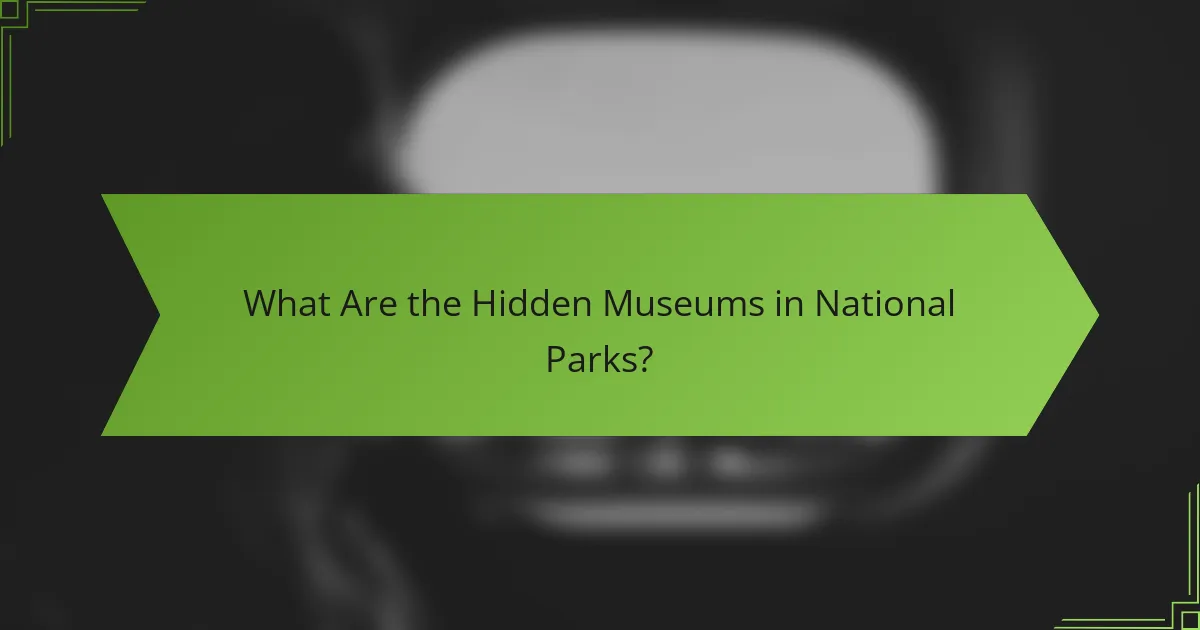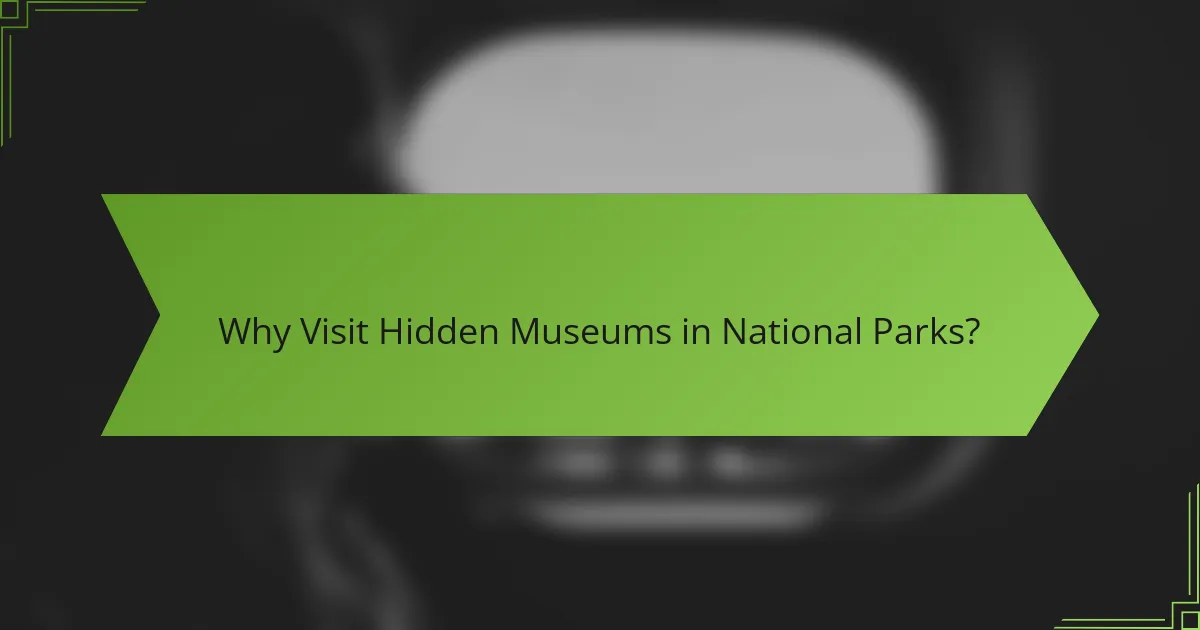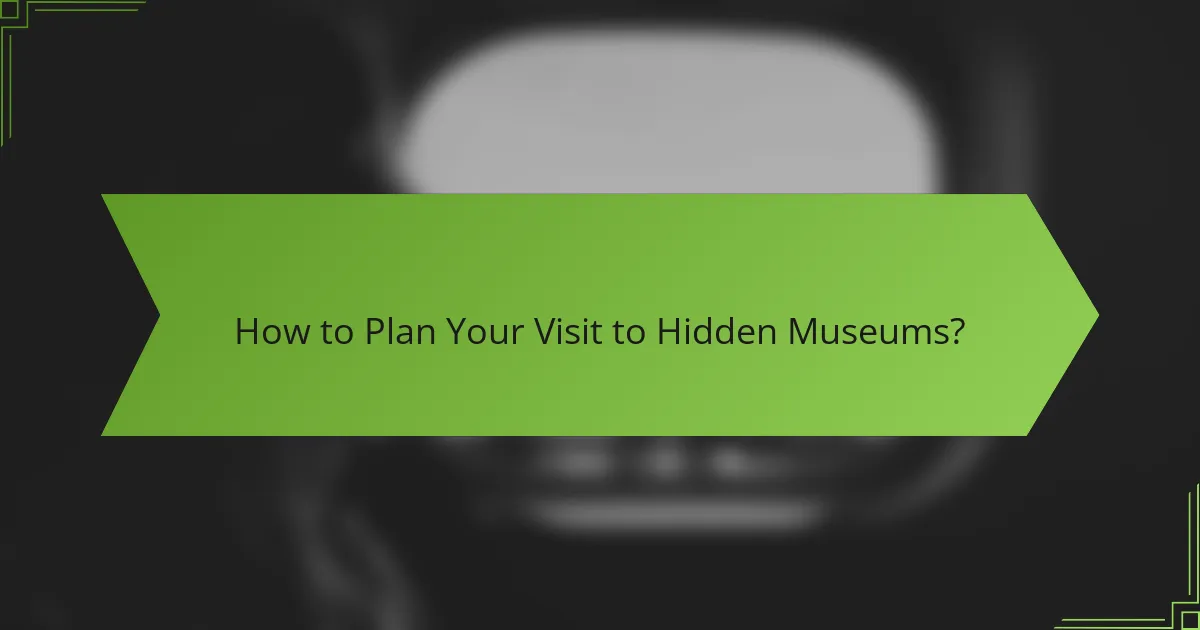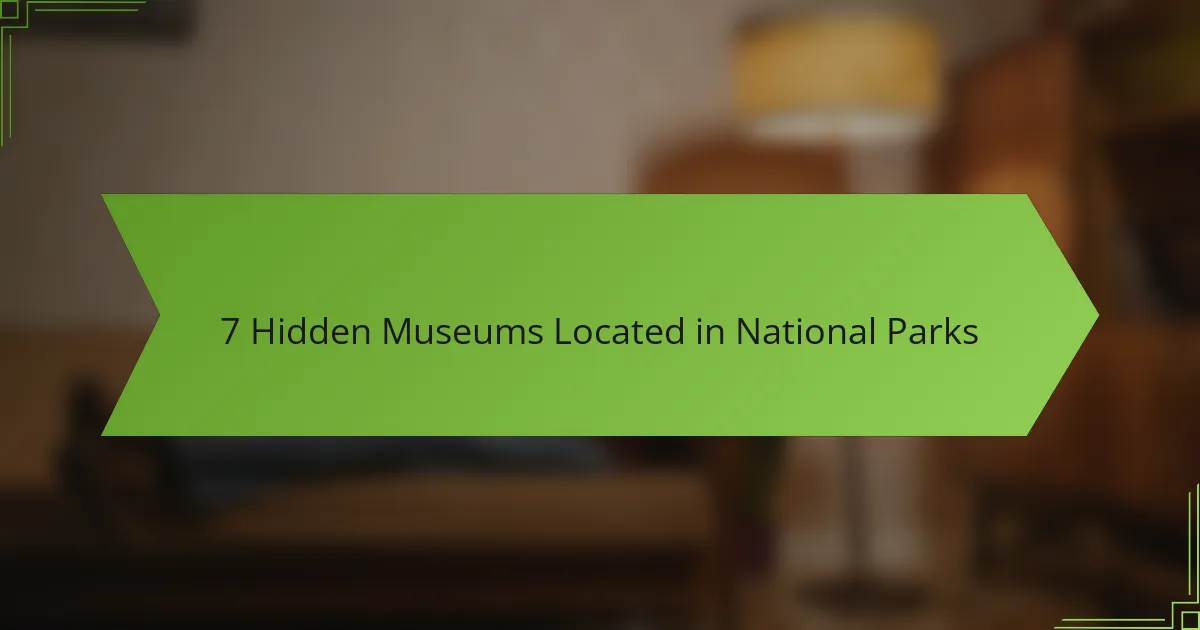Discovering hidden museums in national parks reveals a treasure trove of unique exhibits that highlight the natural and cultural history of these stunning landscapes. These lesser-known attractions offer visitors an intimate learning experience, providing insights into local wildlife, heritage, and environment that go beyond typical sightseeing. Planning your visit with attention to operating hours and accessibility can enhance your exploration of these hidden gems.

What Are the Hidden Museums in National Parks?
Hidden museums in national parks are often small, lesser-known exhibits that showcase unique aspects of the park’s natural and cultural history. These museums provide visitors with an opportunity to learn about the environment, wildlife, and heritage of the area in a more intimate setting compared to larger, more commercialized institutions.
National Park of American Samoa
The National Park of American Samoa features the Jean P. Haydon Museum, which highlights the cultural heritage of the Samoan people. Visitors can explore exhibits on traditional crafts, local flora and fauna, and the history of the islands. This museum offers a unique perspective on the Pacific Islands, making it a must-visit for those interested in indigenous cultures.
When planning your visit, consider checking the museum’s hours, as they may vary seasonally. Engaging with local guides can enhance your experience, providing deeper insights into the exhibits and the surrounding environment.
Yosemite National Park
Yosemite National Park is home to the Yosemite Museum, which focuses on the park’s rich Native American history and the natural history of the Sierra Nevada. The museum features artifacts, photographs, and interpretive displays that illustrate the lives of the Miwok and Paiute tribes. This small museum is an excellent starting point for understanding the cultural significance of the park.
To make the most of your visit, consider joining a guided tour that includes the museum. This can provide context to the exhibits and enhance your appreciation of Yosemite’s diverse ecosystems.
Grand Canyon National Park
The Grand Canyon’s Yavapai Geology Museum offers a fascinating look at the geological history of the canyon. With interactive displays and stunning views, this museum helps visitors understand the processes that shaped this natural wonder over millions of years. It’s an ideal stop for geology enthusiasts and casual visitors alike.
Plan your visit during the early morning or late afternoon for fewer crowds. Don’t forget to bring a camera, as the museum’s location provides breathtaking views of the canyon’s formations.
Denali National Park
Denali National Park features the Denali Visitor Center, which includes a small museum area dedicated to the park’s wildlife and ecosystems. Here, visitors can learn about the diverse species that inhabit the region, including grizzly bears, moose, and caribou. The exhibits are designed to educate visitors about the importance of conservation efforts in preserving these habitats.
To enhance your experience, attend one of the ranger-led programs offered at the visitor center. These programs often include talks and guided walks that delve deeper into the park’s natural history.
Everglades National Park
The Ernest F. Coe Visitor Center in Everglades National Park features a small museum that showcases the unique ecosystems of the Everglades. Exhibits focus on the park’s wildlife, including alligators, panthers, and a variety of bird species. This center serves as an excellent introduction to the park’s diverse habitats and conservation challenges.
When visiting, consider participating in a guided tour or ranger-led activity to gain a comprehensive understanding of the park’s ecology. Be sure to check for any seasonal events or educational programs that may be available during your visit.

Why Visit Hidden Museums in National Parks?
Hidden museums in national parks offer unique experiences that combine education and exploration. These lesser-known attractions provide insights into local history, culture, and nature, enhancing your visit beyond traditional sightseeing.
Unique Cultural Insights
Hidden museums often showcase the rich cultural heritage of the surrounding area, including indigenous histories and local art. For instance, the Museum of the Cherokee Indian in North Carolina’s Great Smoky Mountains National Park highlights the traditions and stories of the Cherokee people.
Visiting these museums allows you to engage with local narratives that are often overlooked in larger, more commercialized venues. This can deepen your understanding of the region and foster a greater appreciation for its diverse communities.
Connection to Nature
Many hidden museums are designed to reflect the natural environment, offering exhibits that emphasize the relationship between culture and ecology. For example, the Annenberg Space for Photography in California’s Joshua Tree National Park features photography that captures the beauty and fragility of desert ecosystems.
Exploring these museums can enhance your connection to nature by providing context about the flora and fauna you encounter. They often include interactive displays or guided tours that encourage visitors to appreciate the natural world while learning about conservation efforts.

How to Plan Your Visit to Hidden Museums?
Planning your visit to hidden museums in national parks requires attention to operating hours, guided tours, and accessibility options. Understanding these factors will enhance your experience and ensure you make the most of your trip.
Check Operating Hours
Operating hours for hidden museums can vary significantly, often depending on the season and park regulations. Many museums may only be open during peak tourist months, typically from late spring to early fall.
Before your visit, check the specific museum’s website or contact the park’s visitor center for the most accurate information. Some museums may have limited hours on weekdays or during holidays.
Book Guided Tours
Guided tours are often the best way to explore hidden museums, as they provide in-depth knowledge and context about the exhibits. Many parks require advance reservations for these tours, especially during busy seasons.
Consider booking your tour online to secure your spot. Some museums may offer different types of tours, such as family-friendly or specialized themes, so choose one that aligns with your interests.
Prepare for Accessibility
Accessibility varies among hidden museums, with some offering facilities for visitors with mobility challenges while others may have limitations. Check the museum’s accessibility options on their website or inquire at the park’s visitor center.
If you require specific accommodations, such as wheelchair access or assistance, it’s advisable to contact the museum in advance to ensure your needs are met during your visit.

What Are the Benefits of Visiting These Museums?
Visiting hidden museums located in national parks offers unique insights into local history, culture, and natural science. These museums often provide a more intimate experience compared to larger, more commercial institutions, allowing for deeper engagement with the exhibits.
Educational Opportunities
Hidden museums in national parks present valuable educational opportunities for visitors of all ages. They often feature specialized exhibits that focus on the unique ecology, geology, and history of the surrounding area, making learning both relevant and engaging.
Many of these museums offer guided tours, workshops, and interactive displays that enhance the educational experience. For example, a museum in a national park may host ranger-led programs that delve into the local wildlife or geological formations, providing firsthand knowledge from experts.
To maximize your learning, consider checking the museum’s schedule for special events or programs before your visit. Engaging with staff and asking questions can also enrich your understanding and appreciation of the exhibits.



